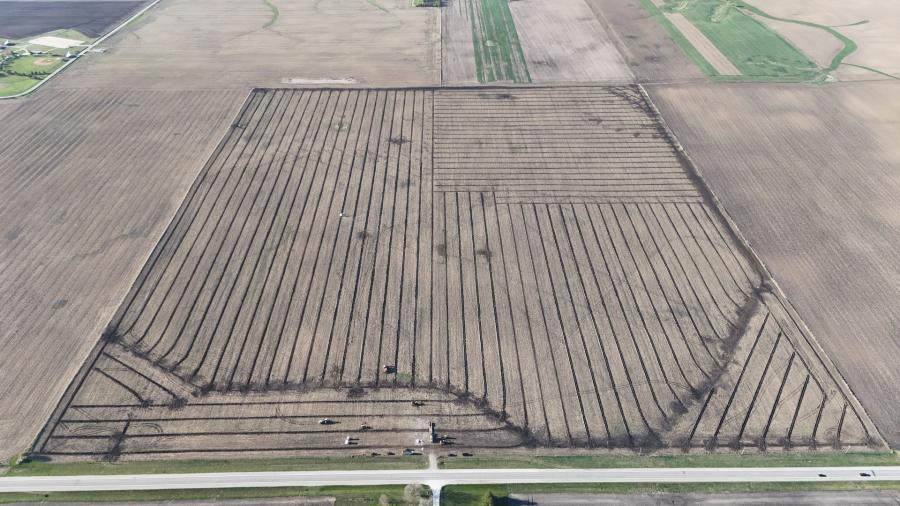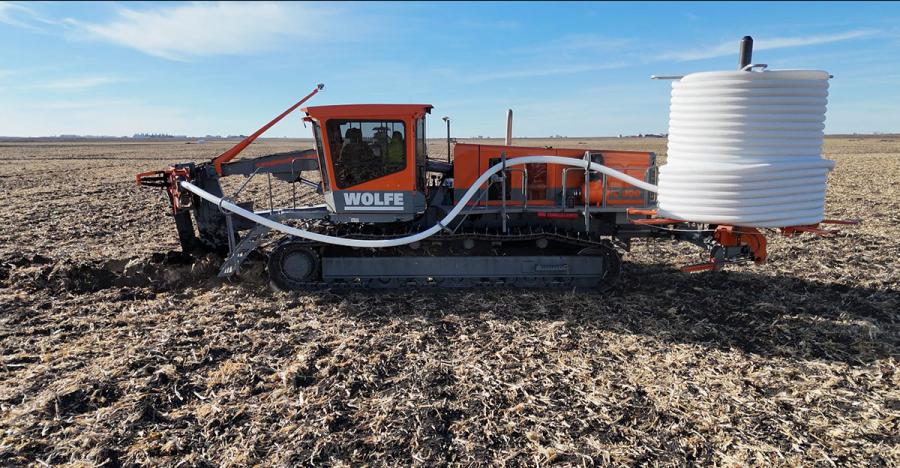Why do narrower spacings, 50' to 70', 3.25' to 3.5' deep work better?

It has better control over the water-table curve, creates more oxygen in the soil and allows the plant more available water in the root zone during the growing season. In dry years there will be less drought stress because of the added soil water storage capacity (water table is higher) while in wet years excess water above the tile is still removed as quickly and efficiently as it is with deeper drains. This eliminates the yield drag in between the lines you get at wider spacings.
Shallower tile promotes less loss of nitrogen. At closer spacings and shallower tile, nitrate will be more likely to reach the biologically active but saturated zone and be converted to nitrogen gas by denitrifying bacteria.The conversion of nitrate to nitrogen gas would prevent the nitrate from reaching the pipes and nearby surface waters.
Also, tighter spacings meet the 1/2" drainage criteria, on 60' centers, 3 1/4' to 3 1/2' deep, will provide for excellent drainage in silty loam soils which are predominate in most of the Midwest.
All soil conditions aren't universal, but a good rule of thumb is 50' to 70' spacing with the tile at an optimum depth not to exceed 4' deep to the flow line. If you have any questions feel free to contact us for a free consultation.
Benefits of Sub-Surface Tile Drainage

Deeper root growth- Soil particles only bind what can be used. Beyond this point, water table levels become too high and plant root growth will slow or stop completely. Disease susceptibility will also increase. The removal of excess moisture insures continued root growth for better production when moisture is scarce.
Total field farming- System drainage does much more than dry up perennially wet areas. Properly spaced sub-surface drains, 50 to 70 feet apart, provide growers with consistency across the field. You no longer have to wait for those stubborn areas at planting and harvest.
Proper soil structure- Excess moisture can make your valuable inputs unavailable and cause long term damage to the soil structure. The proper balance of moisture, oxygen and organic matter can more readily be achieved and maintained through proper sub-surface system drainage. Additionally, compaction becomes less of an issue.
Reduced Costs - Your production costs can be decreased through better usage of inputs from your field management plan. Wear and tear on equipment and fuel useage will also decrease as the drainage system helps improve the structure of your soils.
Higher Crop Yields - Drainage systems represent greater production and improved yields.
Improved Holding Capacity - Your fields can now handle both light and heavy rains better since the system allows the soil profile to hold and utilize more moisture without giving it up to run-off.
Increased Land Value - A well-drained field is more valuable.
Tax benefits- Drainage tile has many tax benefits. Reach out to us today for a FREE guide to the tax advantages of drainage tile.